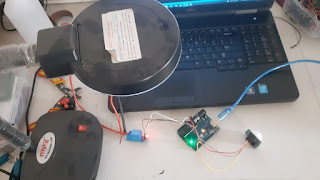DIY Motion-Activated Relay Control using Arduino



Definition:
An optocoupler, also known as an opto-isolator or photocoupler, is a type of electronic component that is used to isolate two circuits electrically while allowing them to communicate with each other optically.

Explanation:
An optocoupler consists of a light-emitting diode (LED) and a photodetector (usually a phototransistor or a photodiode) that are housed in a single package. The LED emits light when a current is applied to it, and this light is then detected by the photodetector, which converts it back into an electrical signal.
The two circuits that need to be isolated are connected to the optocoupler in such a way that the LED is part of one circuit and the photodetector is part of the other circuit. When the LED is turned on, it emits light that is transmitted across the isolation barrier to the photodetector, which then generates a corresponding electrical signal that can be used by the second circuit.
Uses:
Optocouplers are used in a wide range of applications where it is important to isolate two circuits to prevent interference, reduce noise, or improve safety. Examples include power supplies, motor control circuits, medical equipment, and telecommunications equipment
Comments
Post a Comment